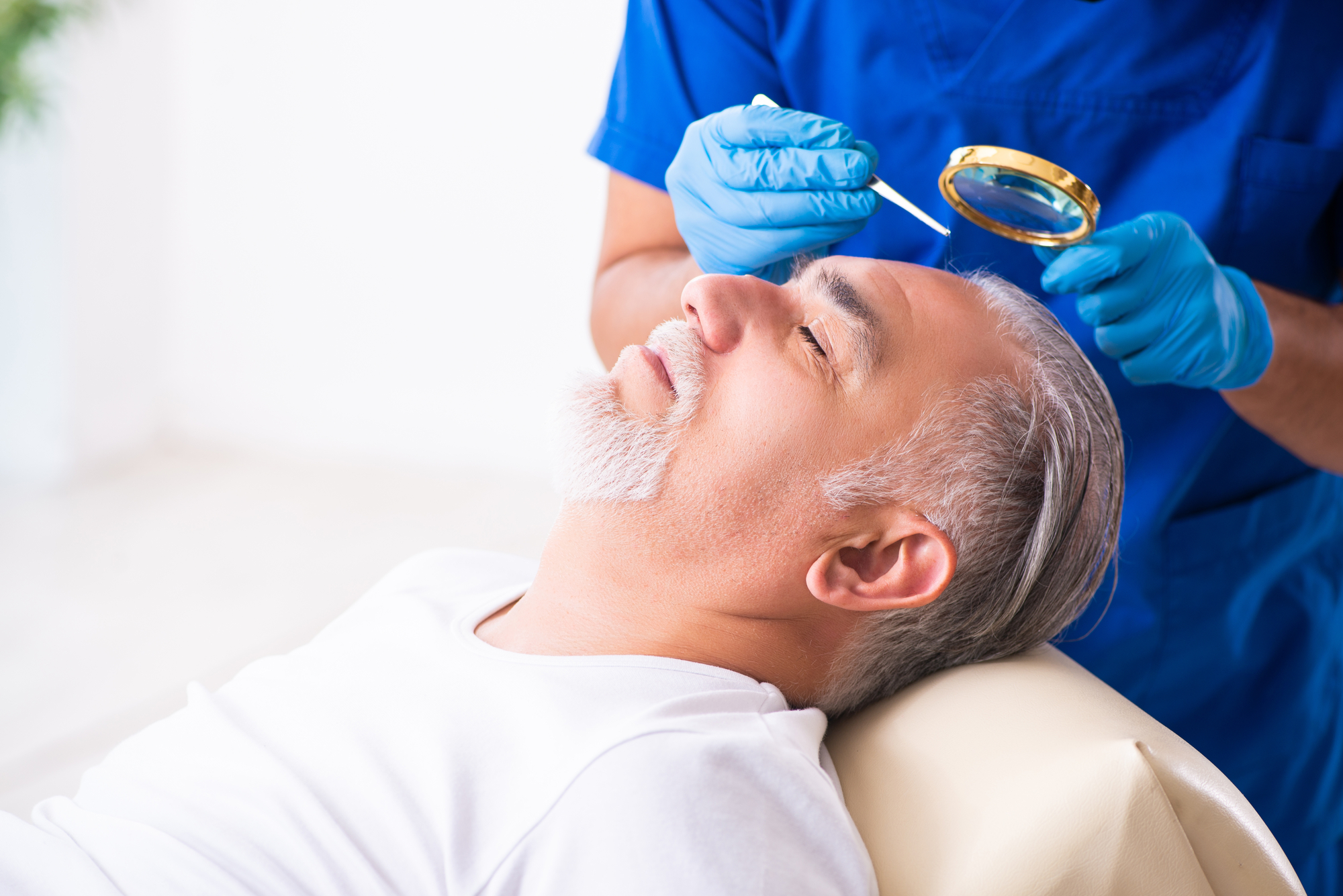A hair transplant has the potential to be permanent, meaning that the results will endure for at least 20 years and, in most cases, for life. Through the process of hair transplantation, lifelong hairs that are not subject to the process of hair loss are moved from the back and sides of your head to the parts of your head where you are balding. Because these lifetime hairs maintain their longevity even after being transplanted to a new place in the scalp, a FUE hair transplant has the potential to be a permanent solution to the problem of balding.
Why does a hair transplant remain effective for such a long time?
Even in old age, a balding man or woman will still retain hair on the back and sides of their head, as can be seen, if you examine their head from the back and sides. This is due to the fact that the processes that are responsible for hair loss do not affect these locations, whereas the hair on top and in the head is particularly vulnerable to hair loss, particularly in diagnoses such as male or female pattern hair loss.
Because of this, the hairs on the sides and back of your head are more likely to remain there throughout your entire life. They maintain their resilience even after being extracted and transplanted from one part of your scalp to another part of your scalp where you are balding. This indicates that they remain in the new region for an extended period of time, which increases the likelihood that the hair transplant will be permanent.
Will you need more hair transplants in the future?
The number of hair transplants that you will require is determined by a number of criteria, including your age, the manner in which you have lost hair, and its severity.
Even though many patients are pleased with the new hair growth that occurs after their first transplant, they frequently decide to have further procedures to restore density to regions of thinning hair later on.
This is due to the fact that the non-transplanted, natural hairs on top have the potential to continue shedding in the years to come. In most cases, the quantity of grafts that are used during these follow-up treatments is significantly reduced.
Are there any alternatives?
There are a number of drugs and therapies on the market that can address hair loss, but the only treatment that leads to results that are permanent is surgical hair restoration.
The following are some alternatives to having hair transplant surgery:
- Minoxidil (applied topically)
- Finasteride tablets
- Laser treatment
- PRP therapy
- Scalp massage
- Anti-hair loss shampoo
Some people may report an improvement in the density or quality of their hair, while others may find that the process of hair loss is slowed down or stopped altogether.
But the good effects of medicines and other products don’t last forever. You have to keep using the product to keep getting the results. While these things may be cheaper than a hair transplant in the short term, over time they will end up costing much more, and with a hair transplant, you are guaranteed good results.
Is there anything that can affect the permanence of a hair transplant?
How well you look after your hair immediately after the transplant
The period immediately following the transplant procedure and continuing for the first few weeks is the most crucial. It is imperative to provide adequate defense for the delicate young hair follicles as they establish themselves in the scalp. Your surgeon will give you specific guidelines based on your condition and their experience. Exercise, intense sweating, straining of the scalp, and getting the transplant region wet are some examples of general activities that should be avoided.
Long-term care
Setting up healthy grooming habits will make it easier for you to get long-lasting results from your hair transplant. When shampooing and conditioning, be as gentle as possible and try to avoid roughly rubbing the scalp and hair. The same hair care practices that are used for normal hair will also preserve the results of your transplant. Some examples of these practices include brushing your hair carefully so that you do not tug or pull on the hair and using the same practices.
If you look after your grafts, you should be able to enjoy outstanding results for many years to come.
Wear a hat
In the days immediately following the transplant, it is strongly recommended that you do not wear a helmet. On the day of the surgery, when you are going home, you might want to wear a cap that is loosely fitting, but after that, you should try to avoid doing so. When it is appropriate to start wearing a hat again, your surgeon will let you know. Even in that case, it is strongly recommended that you be very careful with the transplant area and only wear loose-fitting hats. When putting on and taking off your cap or hat, you need to exercise extra caution. The same goes for when you put it on. Until you see the full effects of the hair transplant, you should expect this to continue to be the case.
Is it permanent?
It is important for us to point out that a FUE hair transplant has the potential to be permanent, but it can never be guaranteed. The factors we listed above can have an impact on how long it lasts. It will also not prevent you from losing your original hair in that area or thinning it, which may indicate that you need another hair transplant in the future. However, with careful maintenance, it can look great for many, many years. It is a much more cost-effective and permanent alternative to other hair loss solutions, which only last as long as you are using them.
For more information on hair transplants, get in touch with Burbank Hair Transplant for a free, no-obligation consultation. What are you waiting for?



